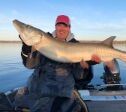- 0



By SkunkedAgain · Posted



By CigarGuy · Posted
.thumb.jpg.5c1a86e9339e49e53f5bfefed2220054.jpg)
By LakeofthewoodsMN · Posted

By Brianf. · Posted
By using this site, you agree to our Terms of Use and Privacy Policy. We have placed cookies on your device to help make this website better. You can adjust your cookie settings, otherwise we'll assume you're okay to continue.

Question
picksbigwagon
anyone here run the oil bath trailer hubs? are they water tight? How do you switch from grease bearings to oil bath ones? Does it involve installing new "Clean" bearing and degreasing the whole hub? Just curious
Link to comment
Share on other sites
14 answers to this question
Recommended Posts